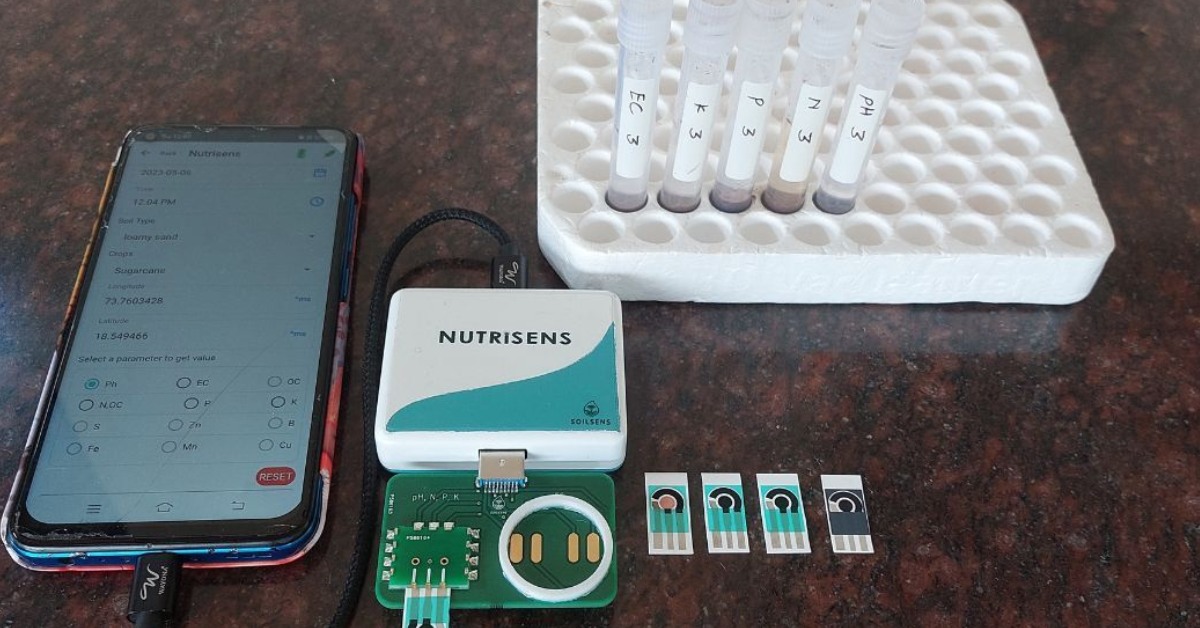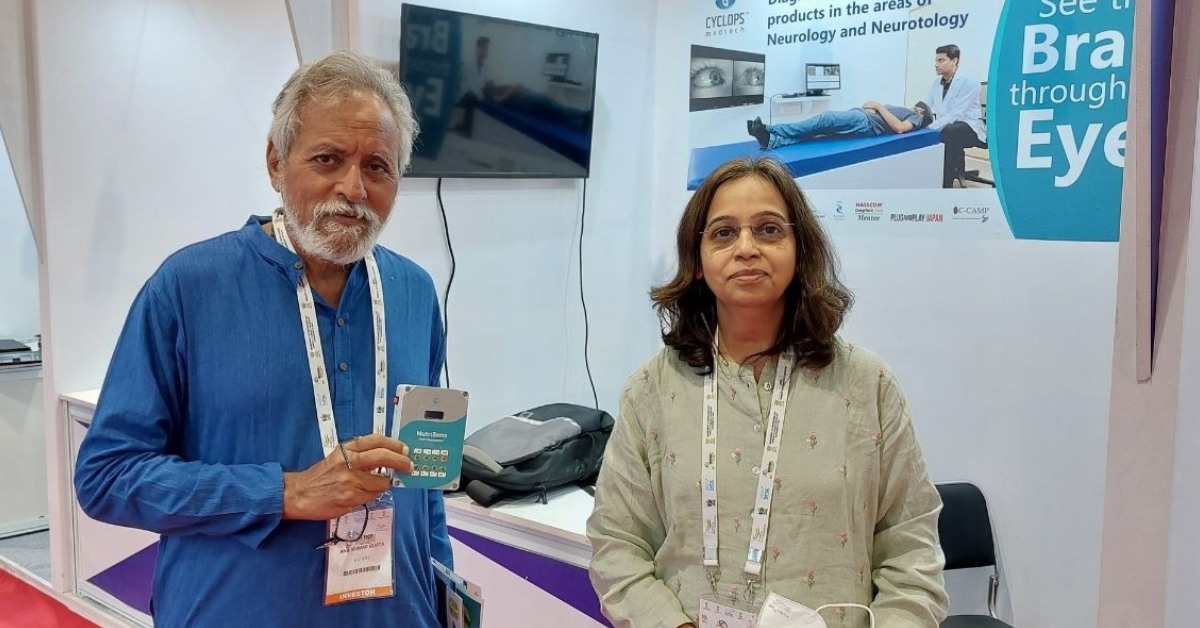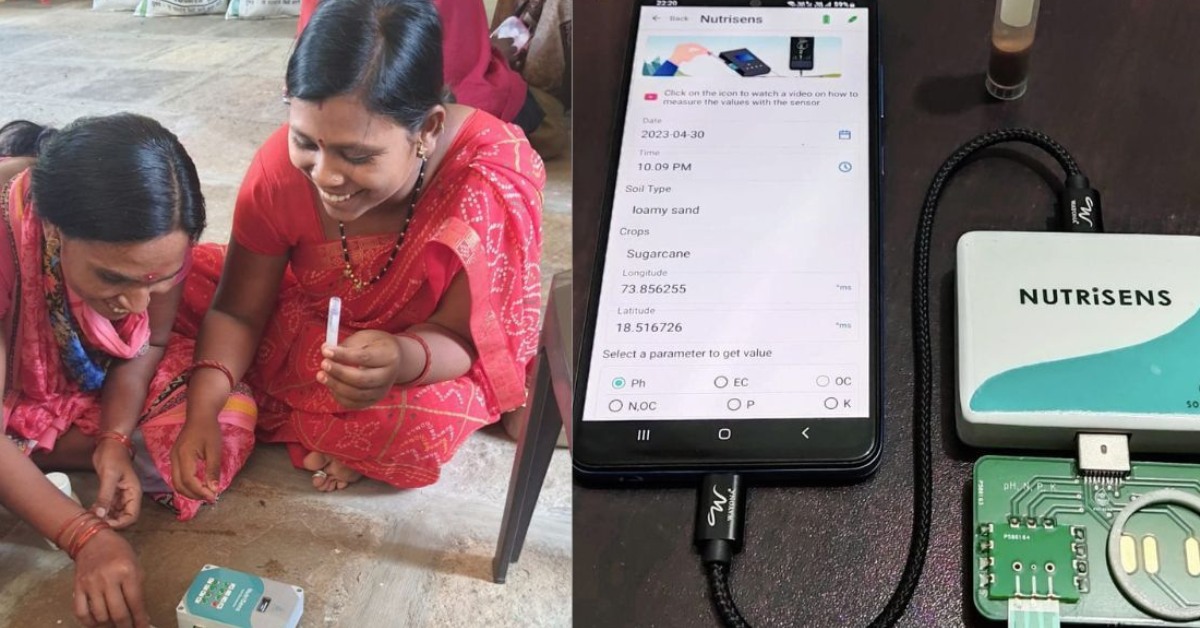This Pocket-Sized Device Can Test Your Soil in 5 Minutes; Here’s How
For generations, Indian farmers have relied on traditional wisdom and visual cues to care for their land. Decades of overuse of chemical fertilisers have left the soil exhausted and less productive. About fifty years ago, producing two tonnes of crops per hectare required just 54 kilograms of fertiliser. Today, that same yield demands over 280 kilograms, which is a startling sign that the soil is no longer responding the way it once did.
Fertilisers are added without knowing what the soil needs. And while soil testing could solve this, the reality is that it is slow, inconvenient, and often too expensive. Farmers must collect half a kilo of soil, send it to a distant lab, and then wait 10 to 15 days, by which time seeds have already been sown, and fertilisers have already been spread.
But a significant breakthrough has finally provided a solution to this problem. Developed by Dr Rajul Patkar, co-founder of Proximal Soilsens Technologies, ‘NutriSens’ is being called the world’s smallest soil testing system. This handheld device offers accurate and lab-like results, not in two weeks, but in under five minutes. And all it takes is a few simple steps.
Here is how you can use NutriSens to test your soil quickly and easily, without any lab visits, delays, or guesswork:
 NutriSens offers accurate and lab-like results, not in two weeks, but in under five minutes
NutriSens offers accurate and lab-like results, not in two weeks, but in under five minutes
Step 1: Take a tiny sample
Start by collecting just one gram of soil, about the size of a pea. This is a massive shift from traditional testing, which requires over 500 grams. Choose a spot in your field that best represents the land where you plan to grow. Make sure the sample is free from rocks, leaves, or debris.
Step 2: Prepare the solution
Next, place the soil into a small vial that comes with the NutriSens kit. Add three millilitres of a chemical solution, shake it gently, and let it rest. Over about 30 minutes, the soil will settle at the bottom, and a clear liquid will rise to the top. That is your testing solution.
Step 3: Apply a drop to the sensor
Using the dropper, place one drop of the clear solution onto a paper-based sensor strip connected to the device. These strips are sensitive to different nutrients and soil properties. Once the drop is applied, the NutriSens device starts analysing.
It checks for six key parameters that affect soil health and plant growth, including pH, electrical conductivity, nitrate, phosphate, potassium, and ammoniacal nitrogen.
 With the help of the device, you will have a complete breakdown of your soil’s nutrient levels in less than five minutes
With the help of the device, you will have a complete breakdown of your soil’s nutrient levels in less than five minutes
Step 4: Watch the results appear
Each parameter takes just 25 to 30 seconds to process. In less than five minutes, you will have a complete breakdown of your soil’s nutrient levels. No need for cables or computers, you get fast and accurate results right there in your hand.
Once complete, a soil health card is generated instantly and can be downloaded to your mobile phone. You now have clear and precise guidance on what your soil needs and what it does not require.
Step 5: Take action based on data
This is where the real impact begins. With your soil health card in hand, you can decide exactly how much fertiliser to use, what kind, and when. There is no longer a reliance on tradition or hearsay. You are applying fertilisers based on scientific evidence, which means better results and lower costs.
As Dr Patkar puts it, “Without complete knowledge, farmers keep on adding fertilisers, which only worsens crop yield.” NutriSens was built to break that cycle by giving farmers clarity, control, and confidence.
 NutriSens can perform up to 3,000 tests a year and lasts for almost three years
NutriSens can perform up to 3,000 tests a year and lasts for almost three years
Today, NutriSens is being used across states like Maharashtra, Gujarat, Punjab, Telangana, Jharkhand, and Rajasthan. It can perform up to 3,000 tests a year and lasts for almost three years.
The tool is not just a time-saver; it is helping restore the balance between nature and agriculture. By showing farmers exactly what their soil needs and does not, it allows them to reduce waste, improve yields, and rebuild soil health over time.
Dr Patkar calls it a “quantum leap in technology,” and she has a vision that one day, NutriSens will be as common in rural homes as a thermometer or a weighing scale. Because in just five minutes, with just a pinch of soil, you can understand your land better, and make every harvest more rewarding.
News